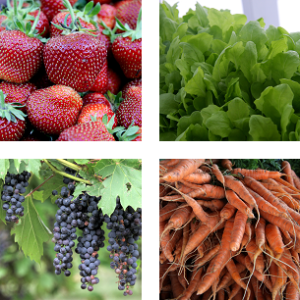 What is the potential for local foods in our region? What needs to happen in order to have local foods more readily available in our region? What are the next steps to increase the amount of local foods grown and distributed in our region? These are a few of the questions asked in a recently completed Local Food Study lead by UMVRDC staff. “Charting the Future of Local Foods” is the final document of a project completed in partnership with the University of Minnesota Extension and the Southwest Regional Sustainable Development Partnership (RSDP) and Countryside Public Health – Statewide Health Improvement Partnership (SHIP).
What is the potential for local foods in our region? What needs to happen in order to have local foods more readily available in our region? What are the next steps to increase the amount of local foods grown and distributed in our region? These are a few of the questions asked in a recently completed Local Food Study lead by UMVRDC staff. “Charting the Future of Local Foods” is the final document of a project completed in partnership with the University of Minnesota Extension and the Southwest Regional Sustainable Development Partnership (RSDP) and Countryside Public Health – Statewide Health Improvement Partnership (SHIP).
The planning process started in the spring of 2016, and worked with stakeholders, growers and places that buy or sell local foods. The RSDP also conducted a local food market analysis to explore the market potential. Currently local foods account for a very small percentage of food purchased in our region. If we were to increase this percentage by a small amount, there is a potential to create economic opportunities for local farmers.
The plan outlines a list of 58 action steps that address what we can do next to improve the local foods system. Hhere are the identified priorities:
- Community Building:
- Find ways that get growers and institutions, restaurants and others together on a recurring basis.
- Host workshops within communities to figure out how to be more welcoming, supportive, and connected with newcomers, farmers, and others.
Food Skills and Availability:
- For young people: Systematically assist schools in providing classes for cooking and preparing food at an early level.
- Expand the mobile food shelf that makes local foods accessible to more people.
Farm Business Planning and Farmer Recruitment:
- Explore who is growing food for human consumption in the region. Identify different kinds and scales of growers and identify those who want to scale up and use different marketing mechanisms.
- Create models for conventional farmers to join the local foods system with an emphasis on small and mid-sized farms.
Marketing:
- Utilize the Buy Fresh Buy Local logo in food campaigns (Cooperative regional marketing [logo/campaign] to grocery stores/restaurants).
Distribution:
- Identify the main local food distributors and continue to work with them.
- Create more stable markets for producers by connecting to local food markets statewide and into South Dakota. Link to food hubs across the state and link co-ops in the surrounding area.
- Establish an online farmers’ market.
- Look into models similar to Bountiful Baskets that support CSAs and other local food producers.
Additional ideas:
- Host opportunities for low to modest income individuals to cook with local foods.
- Create a local foods cuisine cookbook.
For more information, contact Kristi Fernholz at Kristi.fernholz@umvrdc.org or by calling 320.2891.1981 x106
